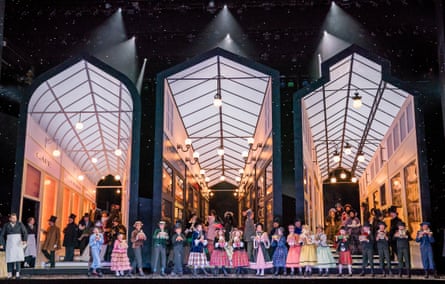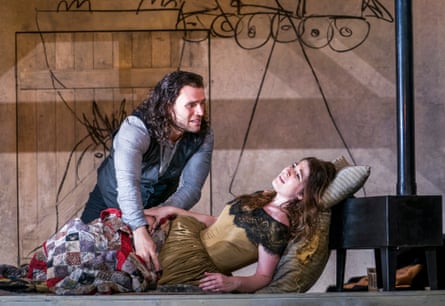Odysseus took only marginally longer than Simon Rattle to return to his homeland. It’s been a mighty wait, with many advance sightings of the recognisable 62-year-old conductor whose popularity, against all usual laws of gravity and the deadly effects of hype, continues to rise. In the past few months he’s given concerts, workshops and an epic Prom, as well as timely verbal contributions on everything from the campaign for a new London concert hall to the state of his home city’s football team, Liverpool FC.
Rattle’s London Symphony Orchestra appointment was announced in March 2015 but rumoured long before. His title of music director, rather than chief conductor, implies a hands-on involvement his predecessors have neither sought nor been offered. After 16 years with the Berlin Philharmonic – which he leaves next summer – Rattle is at last in harness. It’s his third major post, having started his journey of reformation and revolution with the City of Birmingham Symphony Orchestra, where he stayed for 18 years.
Thursday was the real First Night. Loud applause greeted Rattle at the start, a standing ovation at the end. He encouraged no gimmicks. A modest bow, a broad grin, then he raised his baton and got on with it. An all-British programme of quixotic and trepidatious variety launched This Is Rattle, an 11-day festival of 31 events celebrating his arrival. These include concerts programmed by composers to whom he has a particular loyalty.

Each was represented on Thursday evening’s curtain-raiser. Thirty-six-year-old Helen Grime’s short, dancing, air-filled Fanfare, a world premiere, cast a brief spotlight on each area of the orchestra. From it she will make a longer piece for the LSO, for performance next spring. Thomas Adès’s four-movement Asyla was premiered by Rattle in 1997, when he was still with the CBSO. This fiery work hisses and glows with molten energy, unfurling into a pounding, techno-inspired finale.
Harrison Birtwistle’s 25-minute Violin Concerto, played with fearless virtuosity by Christian Tetzlaff, spins, lurches and ricochets through restless moods, now in partnership with the orchestra, now with soloists who step forward to play. The work ends in a poetic recession, orchestral colours erased one by one, leaving a single, plucked note on the solo violin. That delicacy of sound is also prominent in Oliver Knussen’s short, sensuous Symphony No 3 (1979), in which the combinations of celesta, harp, guitar and chimes leave their mark.
The last work in this all-British evening was the first written: Elgar’s Enigma Variations. Starting with expansive leisure, Rattle here seemed to challenge the players to stretch their capacities in this familiar score (less easy to judge in the contemporary works). He has spoken of the tendency of British orchestras to play absolutely on the beat, with little of the rhythmic flexibility of, say, his Berlin musicians. Accordingly, the LSO leader Roman Simovic was visibly cajoling his violin section towards a more fluid and agile sound, to which they responded, whether in the spiky detail of Variation II, the ripeness of the fifth or the hushed, silvered opening of “Nimrod”. This was a rigorous, uplifting kick-off for the LSO’s Rattle years, with all to play for.
A big week, too, for the Royal Opera, which has replaced John Copley’s staging of Puccini’s La bohème after 43 years with a fresh one by Richard Jones, with Stewart Laing (designer), Mimi Jordan Sherin (lighting) and Sarah Fahie (movement). To escape their curtain call with cheers and no boos is an achievement. Judiciously retaining a period setting, they have slightly updated the 1830s Paris of Murger’s Scènes de la vie de bohème (the opera’s source) to a mid-century “railway age” look. Women wear tartans, hooped skirts and bonnets. Men in long frock coats and top hats might have stepped out of an early volume of Proust.

Conducted by Antonio Pappano, with a good cast, limpid, hushed strings and urgently pointed woodwind and brass, all is secure musically. First-night nerves will vanish. The Australian soprano Nicole Car has a lovely mix of desperation and tenderness as Mimi, with an attractive warmth in the upper voice. American tenor Michael Fabiano, radiant vocally but also a capable actor, is the life force of the evening, his Rodolfo vivid and credible. The star Polish baritone Mariusz Kwiecień sings Marcello with classy intensity. Simona Mihai (Mimi later in the run) is bright-voiced and so outrageous as Musetta you want to smack her, especially when she whips off her silk knickers at dinner.
A detailed appraisal of the music, this once, must yield to an account of the new staging. Jones and Laing follow the work’s dramatic trajectory scrupulously: from the sparse attic home of the young bohemians, via a spectacular Saint-Germain on Christmas Eve and a chilling Barrière d’Enfer. As a piece of stagecraft, it is coherent, streamlined and thoughtful, honouring Puccini’s masterpiece in all its detail. How it will change and mature, whether over a decade or four, is part of the fascination.
In the grand second act we are whisked into the glass-and-iron passages couverts of old Paris – that world of enclosed streets which later obsessed Walter Benjamin in his epic Arcades Project. Mimi’s death, for all its visual stylisation, was overwhelming. Her friends stand back in a line, outsiders to this terrible intimacy. Musetta tidily pulls a blanket over the dead Mimi. Rodolfo can’t bear it, pulls it off, grabs her in his arms, sobbing. All too imaginably true.
One ingredient of the old staging remains. The bass Jeremy White has sung the cameo role of Benoît 91 times since 1993. He will give 22 more performances this season. This sort of company spirit and continuity cannot be manufactured. He’s certainly had a chance to learn the part.

This Is Rattle continues at the Barbican, London, until 24 September. Simon Rattle’s inaugural concert as music director of the LSO is available on Radio 3 iPlayer until 12 October
- La bohème is in rep at the Royal Opera House, London, until 10 October, and screened live in cinemas on 3 October. Radio 4’s Book of the Week, Following Pappano, goes behind the scenes of the Royal Opera’s new La bohème, Monday 18 September to Friday 22 September, 9.45am and 12.30am

Comments (…)
Sign in or create your Guardian account to join the discussion